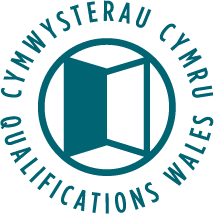Understand the Speech, Language and Communications Needs of Children and Young People with Behavioural, Social and Emotional Difficulties
- Unit ID:
- CCY442
- Unit Code:
- KB63CY002
- Level:
- Three
- Credit Value:
- 3
- Sector:
- 14.1
- LDCS:
- KB6
- GLH:
- 25
- Last registration date:
- 31/10/2029
- Lower age restriction:
- 16

Purpose and Aim
This unit explores the way in which behaviour, social and emotional difficulties are linked with speech, language and communication and provides effective ways to support the speech, language and communication development of children and young people with behaviour, emotional and social difficulties
Learning OutcomesThe learner will
|
Assessment CriteriaThe learner can
|
||||||||||
|---|---|---|---|---|---|---|---|---|---|---|---|
|
|
||||||||||
|
|
||||||||||
|
|
||||||||||
|
|
Assessment Methods:
There are no prescribed assessment methods for this unit. Assessments used should be fit for purpose for the unit and learners, and generate evidence of achievement for all the assessment criteria.
Assessment Information:
Range of behaviour may include:
- withdrawn or isolated
- disruptive and disturbing
- hyperactive and lacking concentration
- immature social skills
- challenging behaviours arising from other complex special needs
- emotional disorders
- conduct disorders/hyperkinetic disorders
- anxiety
- self-harm
- school phobia
- depression.
- increased accessibility of the language used in behaviour management techniques
- ensuring children and young people understand verbal and written information
- clear visual support making rules, routines and boundaries clear, explicit and understandable.
- decreasing visual and auditory distractions
- increased staff awareness and skills
- ensuring approaches which support children to ask for clarification.
If not specifically stated in the assessment information, a plural statement in any assessment criterion means a minimum of two.
Other Mappings:
Mapping to National Occupational Standards (NOS) and the Knowledge and Skills Framework(KSF) for the NHS.
CCLD 337 Create environments that promote positive behaviour
CCLD 337 Create environments that promote positive behaviour
Assessor Requirements:
There is no information regarding specific assessor requirements for this unit. Centres should select assessors who are trained in assessment, and who have subject specific competence to assess at this level.